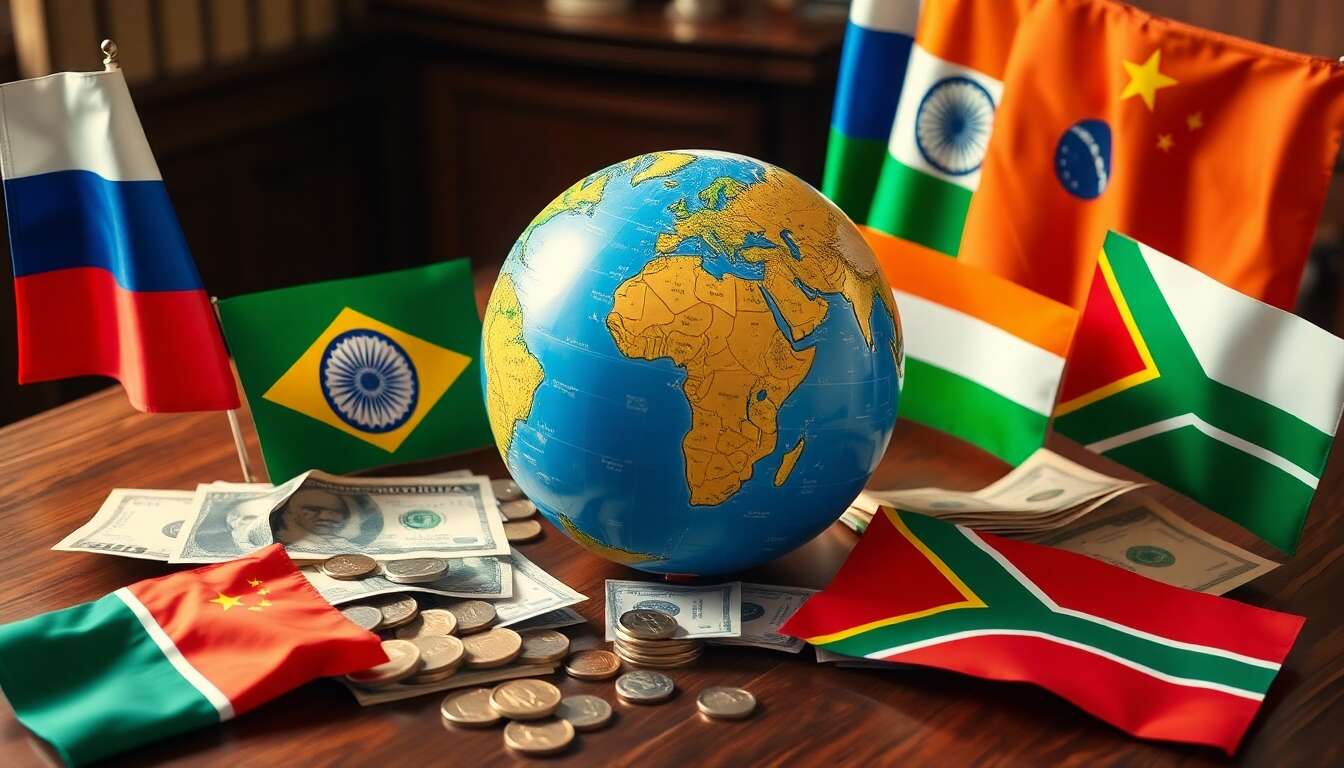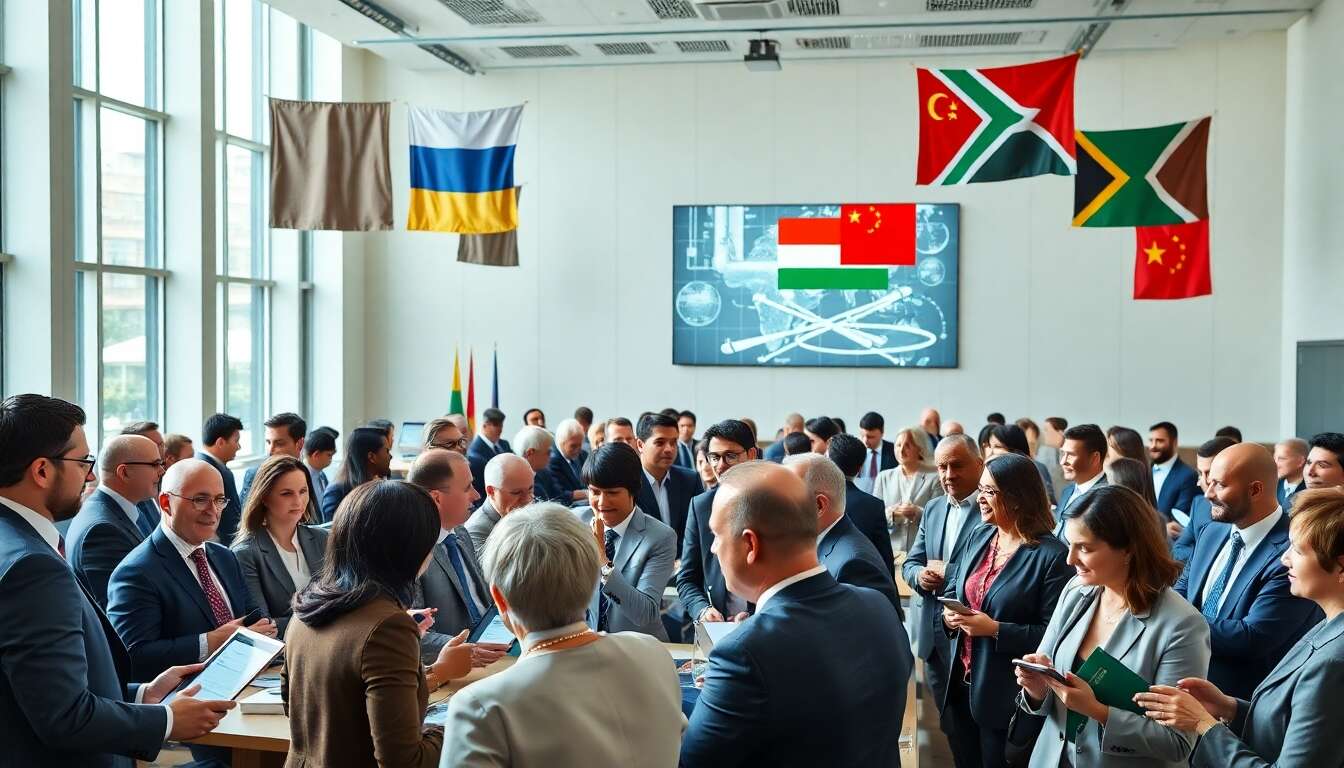In today’s rapidly changing economic landscape, few stories capture the imagination like the rise of the BRICS – a coalition of nations whose economic and political ambitions could redefine the financial world order. As countries like Brazil, Russia, India, China, and South Africa – collectively known as BRICS – consolidate their influence, questions arise about the future of global finance, specifically in relation to the mighty dollar. What follows is an exploration of the shift in global power dynamics, unveiling an economic story in the making that promises to captivate investors, policymakers, and the world at large.
Impact of BRICS on Dollar Dominance
Challenging the Status Quo
The dominance of the American dollar has long been unquestioned, synonymous with stability and power in the global financial system. Yet, with the emergence of BRICS, new questions surface: Can this dominance last ? Are the BRICS nations preparing to upend the global financial order by reducing the world’s reliance on the dollar ?
Efforts towards de-dollarization have been gaining traction, particularly with the introduction of alternative financial practices. Here are some ways BRICS nations are challenging dollar supremacy:
- Promoting bilateral trade agreements that avoid the use of dollars
- Increasing their reserves of gold and other currencies
- Exploring and developing digital currency initiatives
The concept of ‘de-dollarization’ is further fueled by geopolitical shifts. The imposition of sanctions on Russia in 2022 has served as a catalyst for BRICS countries to seek monetary alternatives, aiming to shield their economies from unilateral financial restrictions.
Economic Implications
As the BRICS alliance strengthens its economic position, the implications for global markets are vast. A shift away from dollar reliance could lead to significant fluctuations in exchange rates and require nations worldwide to adapt to a new financial environment.
Yet, the departure from dollar dominance isn’t without hurdles. The transition to a multipolar world economy, where the dollar isn’t the principal currency, poses logistical and strategic challenges.
The discussion naturally leads us to the emergence of BRICS within the worldwide economic and political arena, unveiling the diverse strategies employed by these nations to exert their influence.
Emergence of BRICS in Global Political Economy

Strategic Collaborations
The rise of BRICS in the global political economy is marked by strategic collaborations and alliances. Originating from the shared interests of five emerging economies, BRICS represents a significant portion of the world’s population and GDP. Their coordinated efforts are not only crucial for their own growth but also for challenging established global powers.
What sets the BRICS apart is their focus on mutual development through:
- Annual summits to discuss and align on economic policies
- Fostering South-South cooperation and developing new markets
- Investing in cross-border infrastructure projects
Influence on Global Governance
Beyond economic facets, BRICS aspires to reshape global governance structures. By positioning themselves as a collective voice for developing countries, they challenge the status quo of western-led institutions.
BRICS’ influence extends into areas such as:
- Advocating for UN reforms
- Championing changes in the World Bank and IMF dynamics
- Pushing for inclusive global decisions in forums like the G20
Understanding their expanding reach invites reflection on how BRICS is establishing itself as a viable alternative to the western-dominated financial system.
BRICS: An Alternative to the Western-Dominated Financial System

Developing Financial Structures
The ambitions of BRICS include setting up robust financial structures that cater to their members’ needs, providing alternatives to the traditional, western-led bodies such as the International Monetary Fund (IMF) or the World Bank.
BRICS initiatives encompass:
- The New Development Bank (NDB), aimed at funding infrastructure projects
- Contingent Reserve Arrangement (CRA) to provide liquidity support
- Discussion around the creation of a BRICS cryptocurrency
Strategic Economic Moves
Their financial maneuvers are strategic, focusing not only on reducing dependency on western financial markets but also on boosting their own global presence and credibility.
For instance, the New Development Bank has approved projects worth billions, aiming to address infrastructure gaps in member nations and lending in local currencies as opposed to dollars or euros.
These initiatives signify that while BRICS aims to provide an alternative, navigating internal and external challenges is key to their success. Exploring these challenges further sheds light on the intricacies and hurdles BRICS faces in its quest for financial independence.
Internal Challenges of BRICS in Their Quest for Financial Independence
Political and Economic Differences
While BRICS stands as a unified force against dominant economic powers, internally, each member faces unique political dynamics and economic structures. This poses challenges in aligning on common goals and strategies.
- Economic disparities between China’s massive GDP and the smaller economies of South Africa
- Political tensions between member countries that may affect joint decision-making
- Diverse governance philosophies from democracy to more authoritarian regimes
Aligning Monetary Policies
Creating a cohesive monetary policy framework is complex, as each member has its own central bank and policy priorities. The goal is to create synergy without infringing on national sovereignty.
This requires:
- Regular consultations and financial dialogues
- Aligning interest rates and fiscal strategies
- Ensuring equitable benefits for all members
Despite these challenges, the continuous effort by BRICS to refine their financial strategies offers a glimpse of their potential in developing a shared currency, thus influencing their future economic endeavors.
Future of the Shared BRICS Currency

Possibilities of a Unified Currency
The discussion around a shared currency among BRICS members represents their most ambitious plan yet. A unified currency could not only streamline trade but also embody the financial independence from western-centric systems that BRICS seeks.
Key considerations include:
- Creating a currency that’s stable, widely accepted, and doesn’t disadvantage smaller economies
- Establishing a central financial authority to manage the currency
- Engaging in extensive « currency diplomacy » to gain acceptance
Potential Global Impact
The introduction of a BRICS currency could disrupt current financial systems, impacting exchange rates, trade agreements, and economic power balances globally. However, the feasibility of such a currency, coupled with the political will to implement it, will be crucial determinants of success.
The exploration of these financial possibilities offers a window into the future economic landscape, underscoring the role BRICS may play in our evolving global market.
The story of BRICS and their rise in the global economic scene is one of potential and promise. From challenging the dollar’s dominance to planning for a shared currency, BRICS is carving a significant niche in international finance. The journey is complex, marked by internal challenges and external perceptions, but the ambition is undeniable. As these nations continue to collaborate and innovate, they promise to remain central figures in shaping a multipolar world economy.



